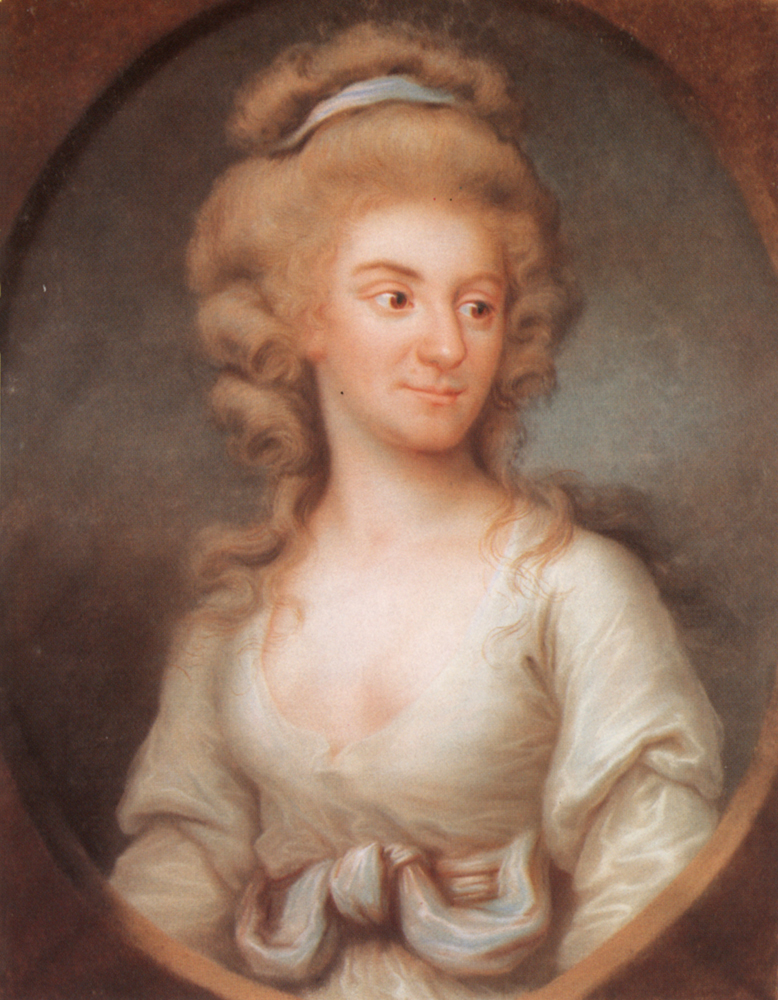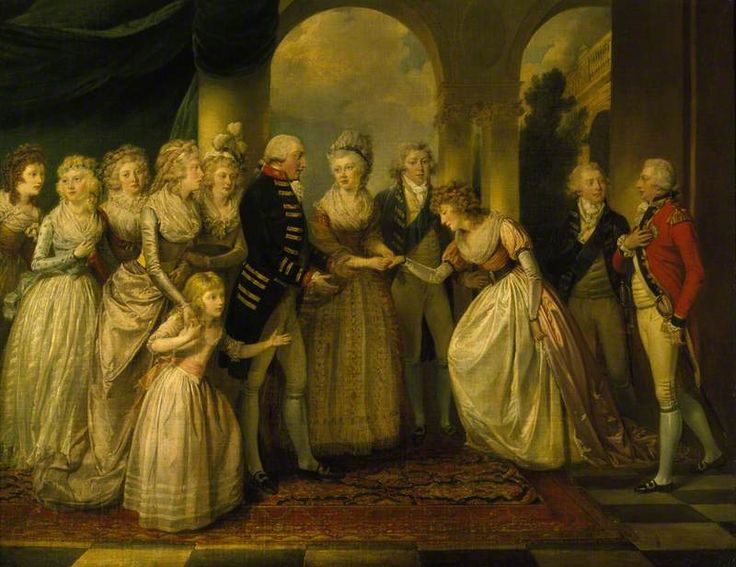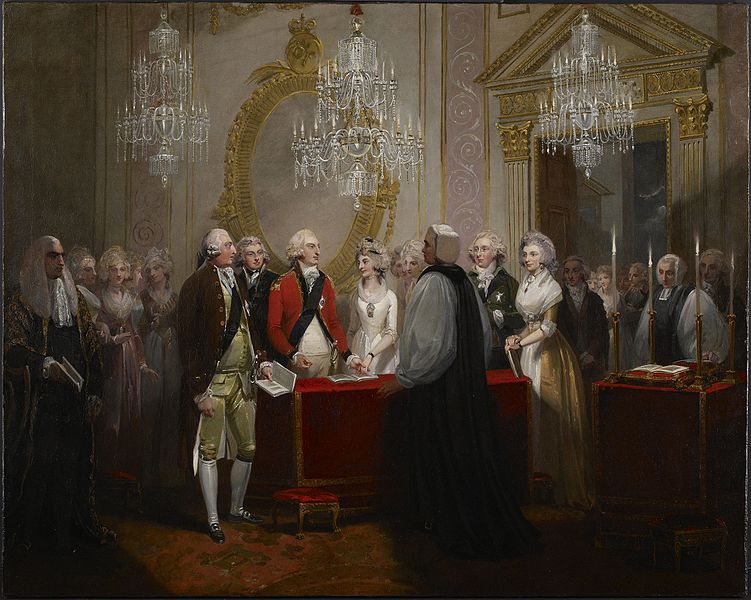
Frederica Charlotta Ulrica, Duchess of York, died on this day in 1820 and today I remember the life of a woman who has held a special place in my historic heart for many years. By all accounts, Frederica did not have the sort of looks that would classify her as a beauty, but beautiful she was, for she had a good heart, the ability to make and friends who were devoted to her, chief among them being Beau Brummell, to whom she regularly gave financial support when it was most needed. At the time of her death, Brummell was living in France and working at decoupaging a folding screen meant as a present for Frederica. Upon receiving word of her death, Brummell put the screen away and never completed the work.
In this series, we will take a look at the life and times of Frederica, along with the people and places associated with her, but first a bit of background and a look at the marriage that brought Frederica to England –
From The Lady’s Monthly Museum, Volume 12 1820
“Her Royal Highness, Frederica Charlotta Ulrica, Duchess of York, was the eldest daughter of the late King of Prussia, by his Majesty’s first consort, the Princess of Brunswick Wolfenbuttel, and was the only offspring of that union. She was born May 7th, 1767, and owed, as in many other cases, most of the virtues which distinguished her character, to the watchful solicitude and tenderness of her mother, under whose eye she was carefully educated. His Royal Highness, the Duke of York, it is said, first saw and admired her at a grand review at Berlin, and on his second return to. the court of Prussia, in the year 1791, he, by the consent of his royal parents, demanded the princess in marriage. The preliminaries were very quickly settled, the only one of any consequence being on the part of the King of Prussia, which stipulated, that His Royal Highness the Duke of York, upon no failure whatever of issue in the Royal line of the present family, should assert any claim upon the throne of Prussia, which restriction being instantly complied with, the ceremony was performed in the presence of the Royal Family of Prussia, and the principal Ministers of state, on the 29th of September, in the same year. The Royal Pair arrived in England about the latter end of the ensuing November, and the ceremony of a remarriage, which, by the act of Parliament, was indispensible, was performed at the Queen’s house, on Wednesday, the 23rd of the same month.”
We are given a more in-depth look at the wedding of the Duke and Duchess in The Every-Day Book and Table Book by William Hone, 1841 –
“The late duke of York was born on the 16th of August, 1763; he died on the 3th of January, 1827. A few miscellaneous memoranda are extracted from journals of the dates they refer to. . . . His majesty (George III) in council having declared his consent, under the great seal, to a contract of matrimony between his royal highness the Duke of York and her royal highness the Princess Frederique Charlotte Ulrique Catherine of Prussia, eldest daughter of the king of Prussia, on the 29th of September, 1791, the marriage ceremony was performed at Berlin. About six o clock in the afternoon, all the persons of the blood royal assembled in gala, in the apartments of the dowager queen, where the diamond crown was put on the head of Princess Frederica. The generals, ministers, ambassadors, and the high nobility, assembled in the white hall. At seven o’clock, the Duke of York, preceded by the gentlemen of the chamber, and the court officers of state, led the Princess his spouse, whose train was carried by four ladies of the court, through all the parade apartments; after them went the King, with the Queen Dowager, Prince Lewis of Prussia, with the reigning Queen, and others of the royal family to the white hall, where a canopy was erected of crimson velvet, and also a crimson velvet sofa for the marriage ceremony. The royal couple placed themselves under the canopy, before the sofa, the royal family stood round them, and the upper counsellor of the consistory, Mr. Sack, made a speech in German. This being over, rings were exchanged ; and the illustrious couple, kneeling on the sofa, were married according to the rites of the reformed church. The whole ended with a prayer. Twelve guns, placed in the garden, fired three rounds, and the benediction was given.
“The new-married couple then received the congratulations of the royal family, and returned in the same manner to the apartments, where the royal family, and all persons present, sat down to card-tables; after which, the whole court, the high nobility, and the ambassadors, sat down to supper, at six tables. The first was placed under a canopy of crimson velvet, and the victuals served in gold dishes and plates. The other five tables, at which sat the generals, ministers, ambassadors, all the officers of the court, and the high nobility, were served in other apartments.
“During supper, music continued playing in the galleries of the first hall, which immediately began when the company entered the hall. At the dessert, the royal table was served with a beautiful set of china, made in the Berlin manufactory. Supper being over, the whole assembly repaired to the white hall, where the trumpet, timbrel, and other music were playing ; and the flambeau dance was begun, at which the ministers of state carried the torches. With this ended the festivity.”

The ceremony of the re-marriage of the duke and duchess of York took place at the Queen’s Palace, London, on the 23d of November, 1791.

Unfortunately, the marriage was not a particularly happy one and the pair separated six years later, the union having produced no children. In Part 2 of this series, we will look at their life together at Oatlands, their marital home and scene of many entertainments enjoyed by a wide circle of their friends.